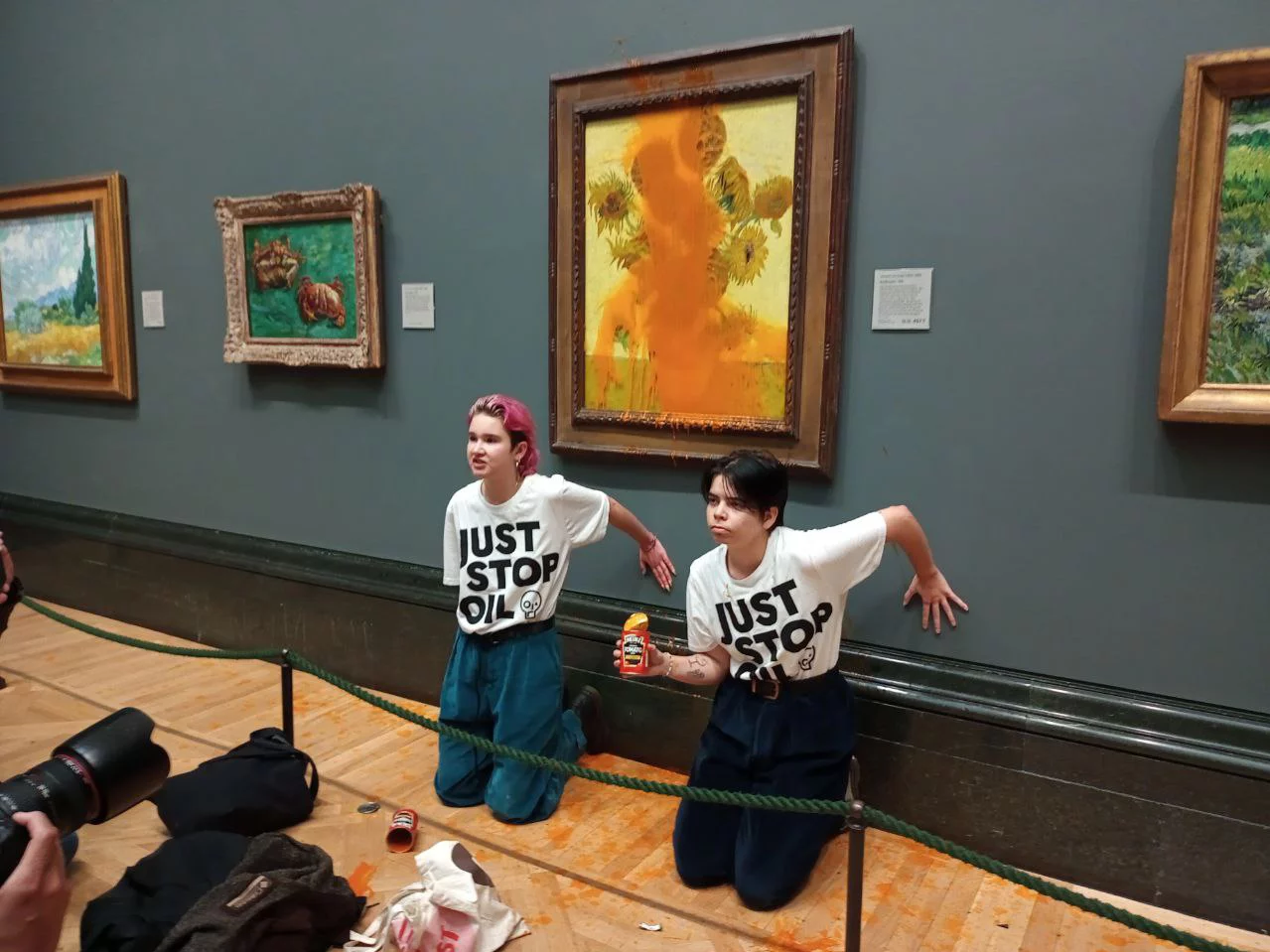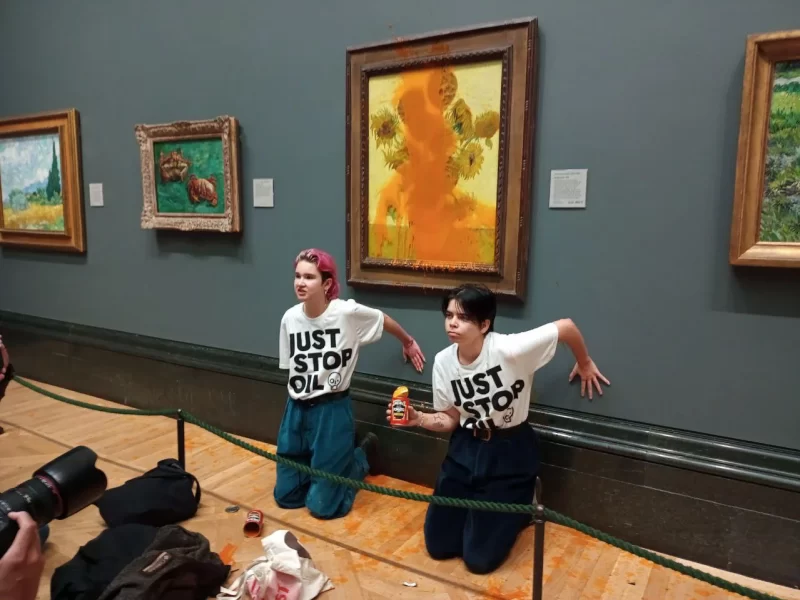Is the Just Stop Oil movement burning out of control?


The Just Stop Oil movement has recently been making waves in Europe, garnering worldwide media coverage. According to their website, their goal is ‘to ensure that the government commits to ending all new licenses and consents for the exploration, development, and production of fossil fuels in the UK.’ Many would call this a noble goal; however, Just Stop Oil and similar groups have been trying to achieve this through controversial means.
The group has protested fossil fuels by blocking off roadways and spraying buildings associated with fossil fuels with orange paint. However, the protestor’s vandalism of valuable artworks has gotten the most attention from the media and the public. I interviewed University of Waterloo professor and art historian Bojana Videkanic about her thoughts on the art vandalism protests.
Perhaps the most cited instance of such protest occurred on Oct. 14 at the National Gallery in London. Two protestors threw tomato soup on the fourth version of Van Gogh’s Sunflowers before gluing themselves to the wall next to the painting. They then expressed the purpose of their action and the message they were trying to send. The painting itself wasn’t damaged as plexiglass protected it.
The individuals being ‘targeted’ by these protests are those who are perhaps most responsible for the current cost of living and climate crisis.
“The social media and the news articles tended to foreground the act itself,” Videkanic said, “but they really didn’t show or talk about what [the protestors] were actually saying.” This is not only the case with Sunflowers but also with many other famous and expensive works of art. The vandalism seems to be the primary focus of the public, leaving its actual purpose to the wayside.
With Sunflowers, the protestors were making a point about the correlation between the cost of living crisis and the oil crisis. The soup was thrown at the painting because, as the protestors explain, many families can’t afford to heat a can of soup. The protestor boomed, “Are you more concerned about the protection of a painting or the protection of our planet and people?!”
Videkanic pointed out the neglected question, “Who owns these paintings?” going on to say, “Even though some of these institutions are “public,” they really aren’t as public as we would like to think [they are].” Art is supposed to be a public good that gives value to society. This isn’t the case, at least not currently. Fees are required for most art museums, an expense that many cannot afford to pay.
Videkanic also mentioned the types of people with prestigious positions on art museum boards, “Most of the people who are emotionally, financially and educationally invested in these institutions are also invested in extractive industries.” The individuals being ‘targeted’ by these protests are those who are perhaps most responsible for the current cost of living and climate crisis.
While she sympathizes with the young protestors’ message and their willingness to act, Videkanic ultimately deems the protest unsuccessful. By creating sensationalism through demonstration, they only draw more attention away from their cause.
Still, the protestors are asking an important question that should be discussed. After vandalizing Sunflowers and gluing themselves to the wall, one of the protestors asked loudly, “What is worth more? Art or life?” Do we have an answer?
You can learn more by following the link below.

